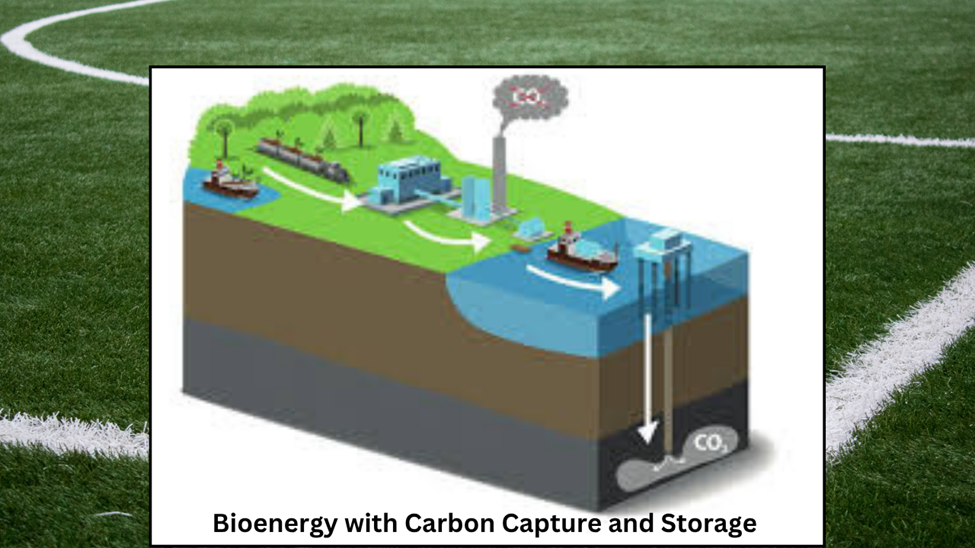The green tech field is rapidly transforming industries worldwide, offering sustainable solutions to combat climate change and environmental degradation. Combining environmental science with cutting-edge innovation, this sector focuses on renewable energy, carbon reduction, and eco-friendly manufacturing. This article explores the green technology field, its key components like wind and solar energy, clean energy solutions, and its impact on industries, including giants like General Electric Renewable Energy and emerging markets like India’s carbon capture initiatives.

Understanding the Green Tech Field
The green tech field integrates environmental science with technology to create sustainable alternatives to traditional industrial practices. By leveraging environmental science, researchers develop methods to reduce pollution, conserve resources, and transition from fossil fuels to renewable energy sources like wind and solar.

Governments and corporations are increasingly investing in the green technology field, recognizing its potential to mitigate climate change while driving economic growth. From sustainable manufacturing to carbon capture, the applications of environmental science in green tech are vast and transformative.
Key Areas in Green Technology
1. Renewable Energy: Wind and Solar Power
Renewable energy is the backbone of the green tech field. Wind and solar power have become mainstream, thanks to advancements in environmental science and engineering.

- Wind Energy: Turbines convert wind into electricity, providing a clean alternative to coal and gas. Companies like General Electric Renewable Energy are leading innovations in offshore wind farms.
- Solar Energy: Photovoltaic panels harness sunlight, making solar one of the most accessible renewable sources. Falling costs and improved efficiency are accelerating adoption globally.
2. Clean Energy Solutions for Businesses and Homes
Businesses and homeowners can now purchase clean energy solutions such as:
- Solar panel installations
- Energy storage systems (like lithium-ion batteries)
- Smart grids for efficient power distribution
These technologies, rooted in environmental science, reduce reliance on fossil fuels and lower carbon footprints.
3. Carbon Capture and Storage (CCS)
A critical focus in the green tech field is carbon capture, which traps CO₂ emissions before they enter the atmosphere. India’s carbon capture initiatives are gaining traction, with pilot projects in industries like steel and cement. Environmental science plays a crucial role in optimizing these systems for large-scale use.

4. Sustainable Manufacturing
Traditional manufacturing is resource-intensive, but sustainable manufacturing applies environmental science to minimize waste and energy use. Techniques include:
- Using recycled materials
- Adopting circular economy models
- Implementing energy-efficient production processes
Companies worldwide are shifting toward greener manufacturing to meet regulatory and consumer demands.
The Role of Environmental Science in Green Tech
Environmental science is the foundation of the green tech field, providing data-driven insights into:

- Climate patterns and their impact on energy needs
- Pollution control strategies
- Biodiversity conservation in industrial zones
By integrating environmental science, green tech solutions become more effective, scalable, and economically viable.
Leading Players in the Green Tech Field
1. General Electric Renewable Energy
A pioneer in the green technology field, General Electric Renewable Energy develops wind turbines, hydroelectric systems, and hybrid energy solutions. Their innovations demonstrate how large corporations can drive sustainability.
2. India’s Carbon Capture and Green Energy Push
India is rapidly adopting green technology solutions, from solar farms to carbon capture projects. Government policies and private investments are accelerating the shift toward a low-carbon economy, with environmental science guiding policy decisions.
How to Explore Green Technology Solutions
For businesses and individuals looking to adopt green tech, key steps include:
- Assessing energy needs and identifying renewable alternatives.
- Purchasing clean energy solutions like solar panels or wind turbines.
- Partnering with green tech firms specializing in sustainable manufacturing or carbon reduction.
Educational programs in environmental science and engineering also provide pathways for professionals entering the green tech field.
The Future of Green Tech
The green tech field is poised for exponential growth as global climate policies tighten. Advances in environmental science will continue to unlock new possibilities, such as:

- More efficient battery storage
- Hydrogen fuel as a clean energy source
- AI-driven energy optimization
Countries like India are proving that large-scale adoption of green technology solutions is achievable, setting an example for the rest of the world.
Conclusion
The green tech field, powered by environmental science, is reshaping how we produce and consume energy. From General Electric Renewable Energy to India’s carbon capture efforts, sustainable innovations are driving real change. Whether through wind and solar power, sustainable manufacturing, or clean energy purchases, the future of green tech is bright—and essential for a healthier planet.
By embracing environmental science and investing in green technology solutions, we can build a sustainable future for generations to come.








